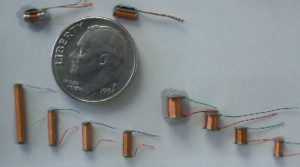By Barry Keate
Barry Keate, has lived with tinnitus over 40 years and has published 150+ research articles on numerous aspects of tinnitus. He is an expert on the condition and a well-known advocate for those with tinnitus.
A new advancement in hearing aid technology, called hearing loops, is overcoming many of the problems that are inherent in traditional hearing aids and cochlear implants. They serve as wireless loudspeakers, delivering clear, customized sound directly into the wearer’s ears.
Hearing aid technology has advanced rapidly in recent decades. Once large, single channel, analog devices have evolved to digital, multi-channel, programmable, in-the-ear instruments with much better sound clarity and comfort. Cochlear implants are surgically installed to replace the cochlea and allow profoundly deaf people to hear again.
One large obstacle still remains. Hearing aids amplify all sounds and can create a cacophony of distracting noise in crowded rooms, concert halls, churches and public meetings. Programmable hearing aids are much better than the older analog models in reducing some of this noise but it is still a large problem for many people.
There are other assisted-hearing devices used in many large venues. FM based systems require wearing large neck loops that must be borrowed from the facility and returned after use. These are infrequently used by most hard of hearing people due to the social stigma entailed in using the paraphernalia.
Hearing loops require no additional equipment other than that found in most modern hearing aids. The sound travels via a magnetic field into the hearing aid, where it is broadcast directly into the ear without any extraneous noise or blurring due to distance from the source. Hearing aids then become a wireless, customized loudspeaker that delivers sound straight from the source and directly into the listener’s head.
Here’s how they work: A hearing loop consists of a thin strand of copper wire, usually implanted in the floor where used, that s connected to the microphone being broadcast. This generates a magnetic field that is carried through the wire. The magnetic field is picked up by a telecoil, or T-coil, that resides inside the hearing aid or cochlear implant.

T-coils are very small electronic coils that are included in almost all newer digital hearing aids and cochlear implants. In the past, T-coils were quite large and were offered as an option for hearing aids for an additional cost. Modern T-coils have become so miniaturized that they are now capable of fitting in all but the most miniaturized hearing aids.
The journal Hearing Review Products, reported in its 2009/2010 reviews of hearing aid models that 126 (69%) of 183 models, including all 38 in-the-ear models and 29 of 30 conventional behind-the-ear models came with telecoils. That number is growing rapidly.
In models equipped with telecoils, there is a tiny switch that allows the user to change between a microphone setting (M) to a telecoil mode (T). Many models also offer a setting for simultaneous microphone and telecoil (MT) for environments where one wishes both inputs.
Hearing loops are becoming omnipresent in northern Europe and Scandinavia. In some countries 90 percent of hearing aids have telecoils. In the United Kingdom, a provision required by the Disability Discrimination Act of 1995, requires, where feasible, the installation of hearing loops in the back seats of all London taxis, at 18,000 post offices and most churches and cathedrals.
In the past in the United States, telecoils were present in only 30% of hearing aids. Happily, this percentage appears to be rising swiftly. Hearing loops have been installed in airports in Michigan and are moving into New York. Loops have been installed in ticket windows of Yankee Stadium and Citi Field, at information kiosks at Ellis Island the Metropolitan Museum of Art and the American Museum of Natural History. Even the New York subway system is placing loops in 500 fare booths, an installation that will be the largest in the US.

Home based hearing loops are how becoming available that allow clear sound from televisions by placing a loop under a cushion. Phone connectors are also available that can incorporate a hearing loop into the telephone for improved listening.
Hearing loops are a cost-effective way to provide benefits that even the most expensive hearing aids cannot deliver. This technology has the potential to transform the lives of tens of millions of Americans. As hearing loops are installed in stores, banks, museums, subway stations and other public spaces, people who have felt excluded are suddenly back to being part of the conversation.
Get Free Shipping!
Order now and get free shipping on either the Tinnitus Starter Kit or Combo Pack. Try the doctor recommended products with clinically proven ingredients for tinnitus. No coupon code required.


